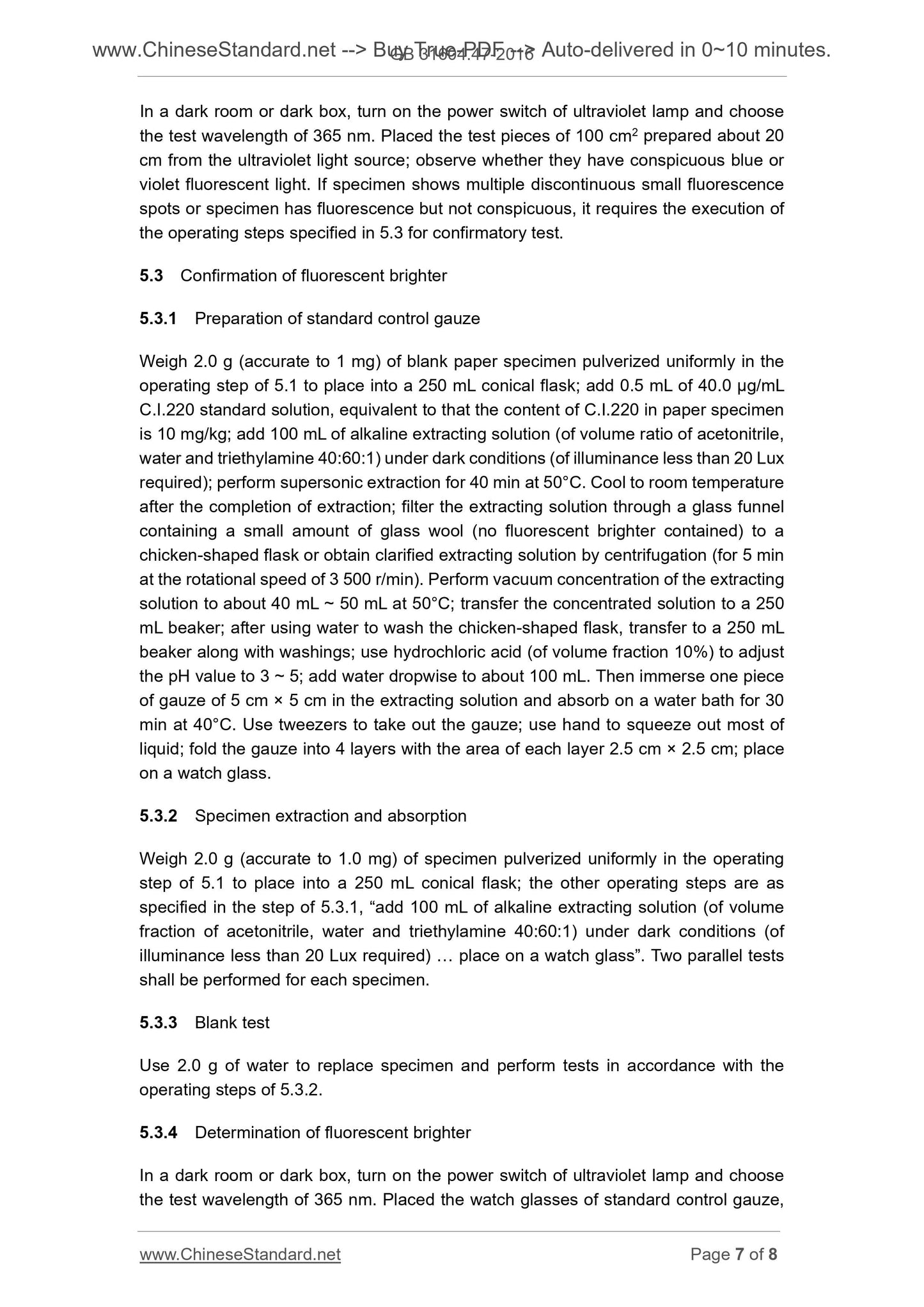1
/
of
5
PayPal, credit cards. Download editable-PDF & invoice in 1 second!
GB 31604.47-2016 English PDF
GB 31604.47-2016 English PDF
Regular price
$70.00
Regular price
Sale price
$70.00
Unit price
/
per
Shipping calculated at checkout.
Couldn't load pickup availability
GB 31604.47-2016: Food contact materials for export -- Paper and paper products -- Determination of fluorescent brightener -- Liquid chromatography
Delivery: 9 seconds. Download (and Email) true-PDF + Invoice.Get Quotation: Click GB 31604.47-2016 (Self-service in 1-minute)
Newer / historical versions: GB 31604.47-2016
Preview True-PDF
Scope
This Standard specifies the method for the determination of fluorescent brighter infood-contact paper, paperboards and paper products.
This Standard applies to the determination of fluorescent brighter in food-contact paper,
paperboards and paper products.
Basic Data
| Standard ID | GB 31604.47-2016 (GB31604.47-2016) |
| Description (Translated English) | Food contact materials for export -- Paper and paper products -- Determination of fluorescent brightener -- Liquid chromatography |
| Sector / Industry | National Standard |
| Classification of Chinese Standard | X08 |
| Word Count Estimation | 6,653 |
| Date of Issue | 2016-10-19 |
| Date of Implementation | 2017-04-19 |
| Older Standard (superseded by this standard) | SN/T 2901-2011; GB/T 5009.78-2003 Partially |
| Regulation (derived from) | State Health and Family Planning Commission Notice No.1516 of 2016 |
| Issuing agency(ies) | National Health and Family Planning Commission of the People's Republic of China, State Food and Drug Administration |
Share









